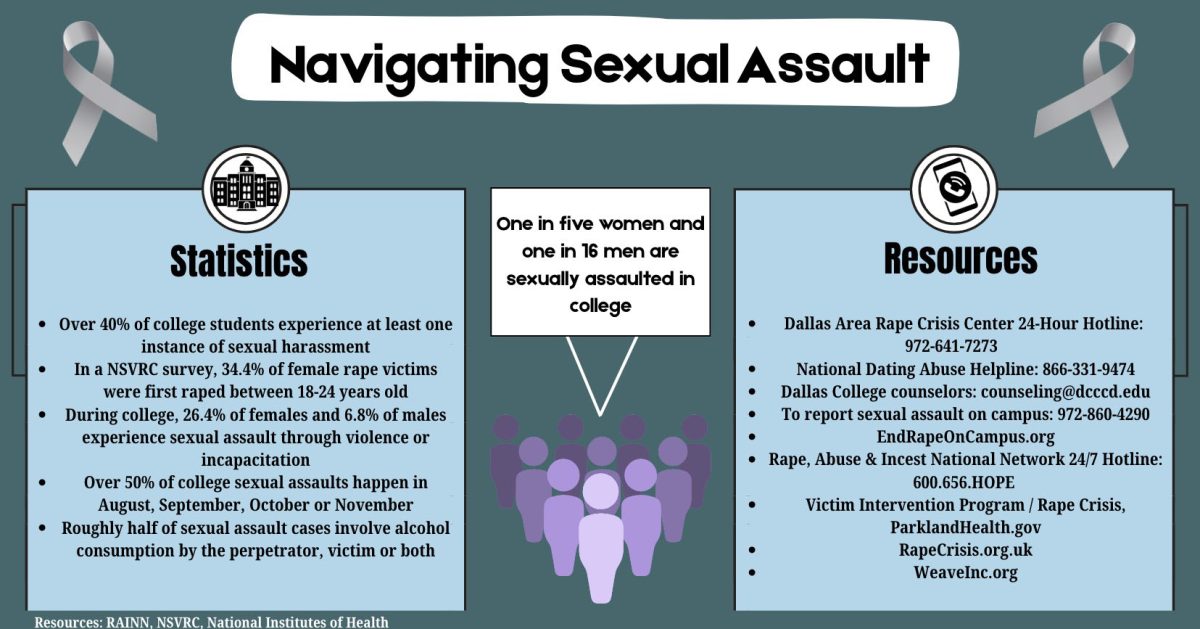NEWS COLUMN
By Jake Griffin
Copy Desk Chief

Seven states now have laws legalizing marijuana for recreational use. Massachusetts, California and Nevada passed bills legalizing recreational marijuana for adults Nov. 9. However, the federal government’s stance on the matter has been the same since Congress passed the Marijuana Tax Act in 1937.
Chris Garcia, a Brookhaven College student, said marijuana could have medicinal benefits for people with cancer, but it should also be legal for recreational use.
“People have everyday problems,” Garcia said. “They need something to get away just to keep the peace.”
Jim Borghesani, a spokesman for YES on 4, an advocacy group the promoted the Regulation and Taxation of Marijuana Act in Massachusetts, told the Boston Globe that “hemp, a strain of cannabis, would become legal as well.”
Industrial hemp, much marijuana, derives from the cannabis plant, and both are affected by new state laws.
Industrial hemp comes from the male cannabis plant and has been used for at least 12,000 years, according to a 2001 research article by April M. Luginbuhl, a professor at Ohio State University. It is used to produce cloth, food, oil, paper, textiles, rope, plastics and construction materials. The percentage of tetrahydrocannabinol, also known as THC, is so low in hemp that it does not create the same “high” effect.
“I don’t see why it wouldn’t [be legal],” Andres Melendez, a student, said. “You can’t experience any high out of it. If you are using hemp to make clothes or to make paper, it’s more cost efficient.”
Osama Binyousaf, a student, said the legalization of hemp would save many trees. “It would save us a lot of money on paper, but I’m pretty sure they aren’t going to use that as an alternative,” Binyousaf said.
The reasons the cannabis plant is illegal can be traced back to two men – William Randolph Hearst and Harry Anslinger.
Hearst ran the largest newspaper chain in the U.S. in the 1930s.He invested stock in tree-paper companies and knew that if hemp paper outproduced the tree-paper industry, he would lose money. Hearst and other companies were threatened by hemp dominating the markets, according to Luginbuhl.
Hemp was made illegal because it was seen as a threat to society.
In 1929, Anslinger was put in charge of the Department of Prohibition in Washington D.C., according to The Influence, an online publication that covers home relationships with drugs and addictive behaviors.
Anslinger was appointed the first commissioner of the Federal Bureau of Narcotics in 1930. Before he said cannabis was not a problem and it did not harm people, according to The Influence.
With the end of Prohibition in 1933, Anslinger had a change of heart. Perhaps he saw his job threatened, so he turned his attention to marijuana, according to theinfluence.com.
Aslinger wrote to 30 leading scientists and asked if cannabis was dangerous. Twenty-nine wrote back no. Anslinger presented the one who said yes to the world.
Anslinger also said using the drug could make someone have “a delirious rage,” and “dreams … of an erotic character” and cause them to “lose the power of connected thought,” according to The Influence.
Marijuana reform has changed drastically since 1996, when California became the first state to legalize medicinal marijuana. Twenty-eight states have now legalized medical marijuana, while many other states have lessened the penalties, according to Forbes.
“I think [legalization] is going to happen eventually,” Binyousaf said. “Texas might be the last state to go.”






